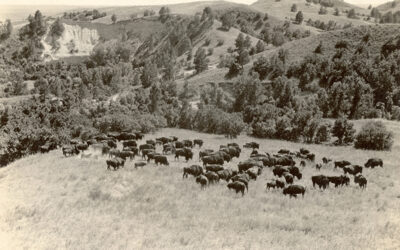Lincoln’s Labor Day parade of 1890 was a joint effort by members of Lancaster County labor organizations and the Farmers Alliance, with some state, county, and city officials among the marchers. The Lincoln Daily Call of September 1, 1890, reported, “There were represented in the procession five brass bands, one drum corps, one company militia, eleven secret labor organizations and all the alliances in Lancaster county. The entire city was on the streets and 5,000 people from the country joined these to help celebrate.
“At 10:15 the line of march began. A representative of THE CALL stationed himself at J and Eleventh street and counted by standing and moving to N the following procession: Marshal Melick and 18 policemen, mounted, nine on white horses, and nine on black horses. The Capital City band, 12 pieces. United Brotherhood of Carpenters and Joiners, 51 in line. They have three organizations in the city with 800 members.
“Painters and Decorators union, 84 men in line. Cigarmaker’s union, 15 men in line. Clipper band, 18 pieces. Plasterer’s union, 24 men. Stone Cutter’s union, 22 men. Bohemian Society C.S.P.S., 85 men. Jackson’s juvenile band, 11 pieces. . . . Governor Thayer and staff. City council, four members. Following this was a large banner on one side of which was painted a large ship which had sprung a leak and sailers were manning the pumps. The following motto explained the situation: ‘Wall Street Ship, Full of Holes. Help! Help! Pump! Pump!'”
A long procession of plain and decorated farm wagons followed. Typical entries: “A large corn float . . . with the following banner ‘We will plow monopoly under.’ The wagon was beautifully festooned with flowers, corn, wheat and bunting. Seventeen wagons containing 107 persons. A wagon with broom stating on banner ‘A Clean Sweep.’ A wagon beautifully decorated with sunflowers. . . . Cherry Alliance showed up well with decorated wagon with motto Usury to None.”te youth to a knowledge of nature’s resources and to the value of the
The Call concluded with the schedule of an afternoon Labor Day program at Cushman Park and the observation that many wagons did not arrive in Lincoln in time to participate in the parade.



